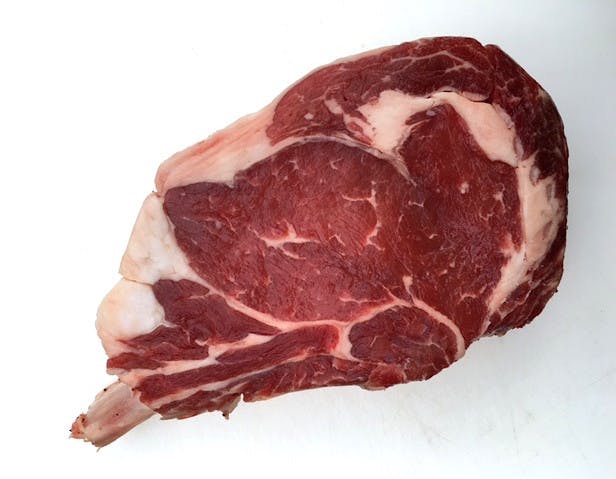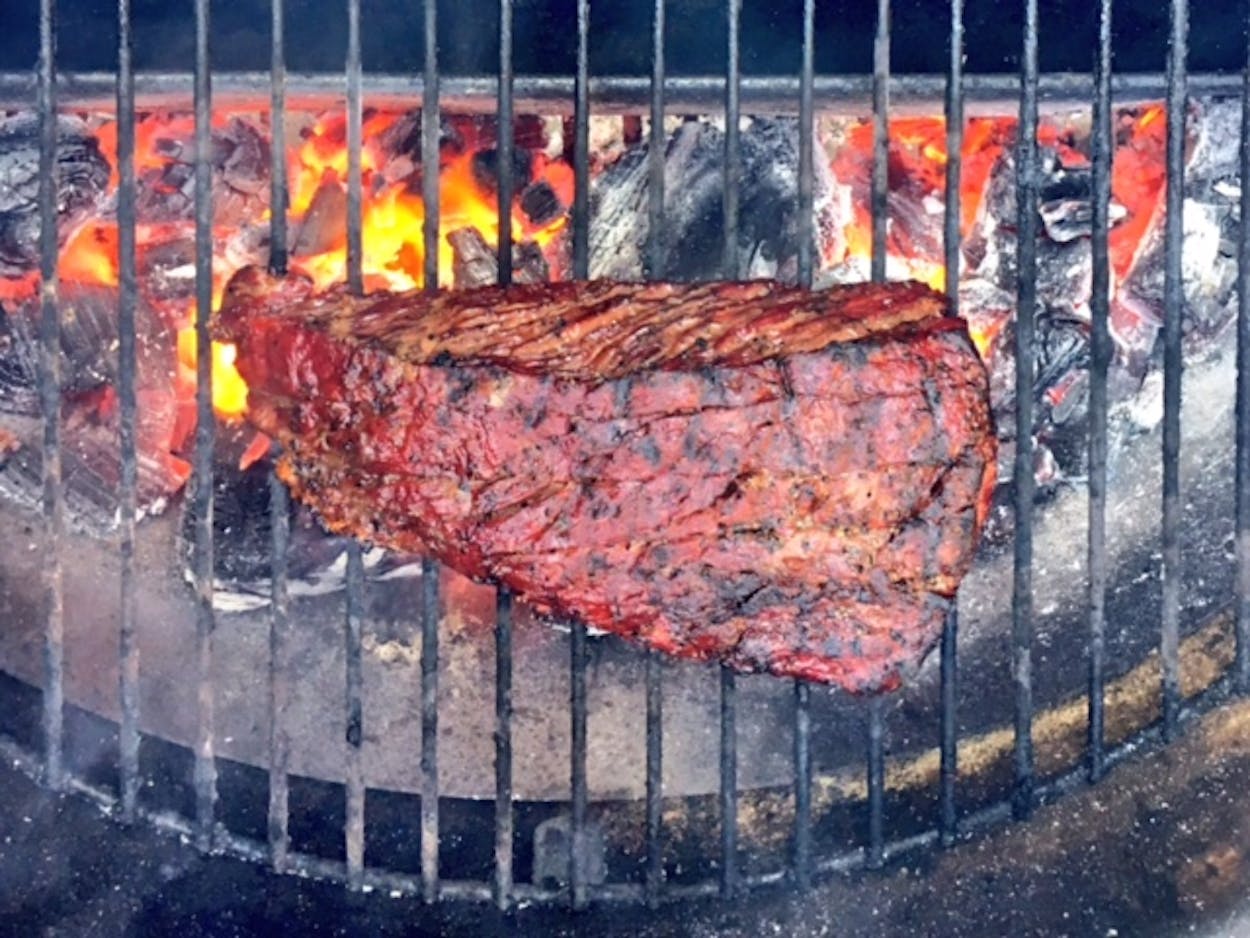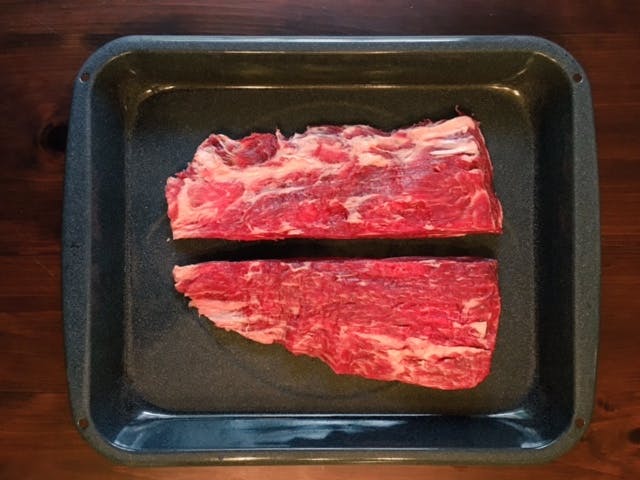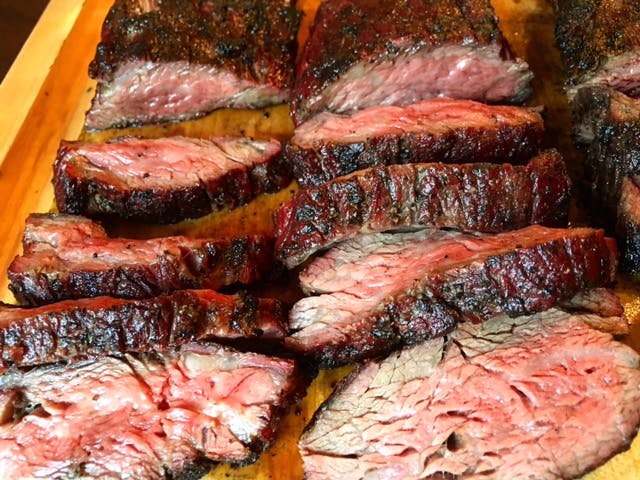I can’t get enough of brisket, and I’ll look for any excuse to eat a ribeye steak, but the best cut of beef is the spinalis. It’s the portion of the ribeye that any steak connoisseur savors first. Also known as the ribeye cap, this cut lays like a thick blanket around the outer edge of the ribeye (upper right in the photo below). It’s more tender than the rest of the ribeye, and generously marbled. I’d buy the spinalis (technically the spinalis dorsi muscle, or IMPS 1112D) on every trip to the butcher shop—if it were that easy.

If you want the whole spinalis muscle, you have to get it it off of a full rack of prime rib. Few butchers would ever agree to take the spinalis off of the prime rib since only a sucker would buy what remains, and you won’t ever find spinalis packaged by itself at the grocery store. So the easiest way to get one is to purchase a whole prime rib and remove it yourself. There’s a thick line of fat between the spinalis and the eye of the ribeye (longissimus dorsi), making it a breeze to separate along the natural seam. Cleaning off all the fat and silver skin can take some time, but it’s worth the effort.
The spinalis doesn’t have an even thickness throughout. The muscle thins out as it gets closer to the rear of the animal. A whole rack of prime rib contains seven bones (bones six through twelve), so if purchasing, say, a four-bone rack ask for the first four bones (bones six through nine) to get the thickest portion of spinalis.
Another option that saves considerable effort is to purchase one from a specialty beef company. Snake River Farms sent me a couple to experiment with, and they have a few options to choose from.
The problem with cooking spinalis is that it’s so thin. As I learned in a previous recipe, getting a good sear on this cut without overcooking it can be difficult. I tried four different variations to see which would give me the best sear while still providing medium rare beef. Mine arrived frozen, so I thought taking it straight from the freezer might be beneficial. I let one thaw just to the point where the surface was tacky enough to hold some salt and pepper. I split it in half and put one half on the grill over high heat, and, borrowing a trick from a Bon Appétit recipe, the other half went directly in the deep fryer.
Neither of these worked. In fact, I got the exact wrong effect. Instead of keeping the center chilly, while the exterior got a nice char, the frozen interior was barely thawed by the time the meat below the surface was already overcooked.
I thawed the other spinalis in the fridge, then split it. Both halves were seasoned cold from the fridge, and they went straight into a 250-degree smoker. The goal was a reverse-sear spinalis with good smoke flavor. It took only about 30 to 40 minutes to get them up to 100 degrees internal. I usually shoot for 120 degrees for a thick steak, but I wanted to go easy on this thin cut before it hit the direct heat. One half of the smoked spinalis went directly on a hot grill, and the other went into the freezer for a quick chill. Bringing the internal temperature down would theoretically allow for a longer, more effective sear before it reached the internal temperature target of 125 degrees.
For tasting purposes, I staggered the smoking step on these two halves so I could grill them together. The cut in the freezer was cold to the touch in about 20 minutes. I placed a probe thermometer into both halves and put them over the fire. They spent about ten minutes on the grill and were ready for serving.
The verdict? Both were excellent. They had the doneness I was looking for with a great sear on the outside. They also had a good smoky flavor. I ate them with a friend who said he didn’t taste much of a difference. I thought the half that went back into the freezer had a bit more smokiness, but we both agreed that either method worked well. Most importantly, we had spectacular smoked spinalis with a rosy interior in less than an hour.
- More About:
- BBQ Recipes










